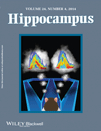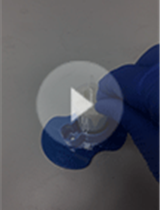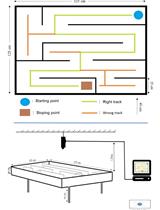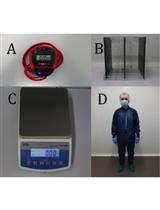- EN - English
- CN - 中文
An Experimental Model of Neonatal Nociceptive Stimulation in Rats
新生大鼠伤害性刺激的实验模型
发布: 2014年11月05日第4卷第21期 DOI: 10.21769/BioProtoc.1283 浏览次数: 10595
评审: Soyun KimAntoine de MorreeAnonymous reviewer(s)
Abstract
In order to survive, preterm and/or sick neonates need diagnostic and therapeutic measures that may cause discomfort, stress and pain during a critical period of intense growing and modeling of the central nervous system (Anand et al., 2013). Scientific interest in the long lasting effects of the Neonatal Intensive Care (NIC) experience, which provides a sensory experience completely different from the natural uterine environment, is growing (Jobe, 2014). The follow-up of critically ill newborn infants until adulthood indicated an association of early noxious stimuli with long lasting alterations in somatosensory and cognitive processing (Doesburg, 2013; Vinall et al., 2014; Vinall et al., 2013). However, one major limitation of the clinical studies is the difficulty to distinguish between long-term effects of pain suffered during neonatal intensive care and other confounding factors such as the presence of non-painful stress during hospital stay, the occurrence of acute and chronic morbidities, the post-natal environmental influences and family care. In this context, the understanding of the roles played by each factor and the interplay between these diverse variables require the use of animal models. The protocol described here is used to model the noxious stimulation in which premature newborns are subjected during treatment in the NIC. The current protocol models inflammatory nociceptive stimulation in neonatal rats, as previously demonstrated (Leslie et al., 2011; Lima et al., 2014; Malheiros et al., 2014). Complete Freund's adjuvant (CFA) is a solution of antigen emulsified in mineral oil and used as an immunopotentiator, causing a painful reaction that lasts 7-8 days after subcutaneous injection. It is effective in stimulating cell-mediated immunity. The rodent model of neonatal inflammatory stimulation with CFA is advantageous because at birth the formation of the central nervous system is incomplete in rat pups and corresponds to that of 24 week intra-uterine human preterm neonates (Anand et al., 1999), following similar patterns in the development of the pain system (Fitzgerald and Anand,1993). The first postnatal week in newborn rat pups corresponds to human premature infants from 24-36 weeks of gestation (Kim et al., 1996; Wilson, 1995), offering a suitable condition to model and compare preterm (rat pups on P1) to full term (rat pups on P8) infants subjected to noxious stimulation. In this paper, we present our methods to induce nociceptive inflammatory stimulation in neonatal rat pups as an attractive approach to study short- or long-term effects and the mechanisms underlying the behavioral repertoire of ex-premature infants or adolescents.
Keywords: Pain (疼痛)Materials and Reagents
- Pregnant Wistar rats are acquired around the 14th day of gestation
Note: It is important to determine the P0 (postnatal day 0).
- Complete Freund’s adjuvant (CFA) (25 µl) (Sigma-Aldrich, catalog number: F5881 )
Note: The CFA is diluted in 0,9% sterile saline just before use (2:1, CFA:saline).
Equipment
- Plastic cages (for maintaining the animals)
- Automatic temperature control system
- Insulin Syringe Ultra-Fine 6 mm (15/64”) x 31 G needle
- Electronic scale (sensitivity 0.1 g)
Procedure
文章信息
版权信息
© 2014 The Authors; exclusive licensee Bio-protocol LLC.
如何引用
Malheiros, J. M., Amaral, C., Leslie, A. T. S., Guinsburg, R. and Covolan, L. (2014). An Experimental Model of Neonatal Nociceptive Stimulation in Rats. Bio-protocol 4(21): e1283. DOI: 10.21769/BioProtoc.1283.
分类
神经科学 > 行为神经科学 > 实验动物模型 > 大鼠
神经科学 > 神经系统疾病 > 动物模型
您对这篇实验方法有问题吗?
在此处发布您的问题,我们将邀请本文作者来回答。同时,我们会将您的问题发布到Bio-protocol Exchange,以便寻求社区成员的帮助。
Share
Bluesky
X
Copy link












